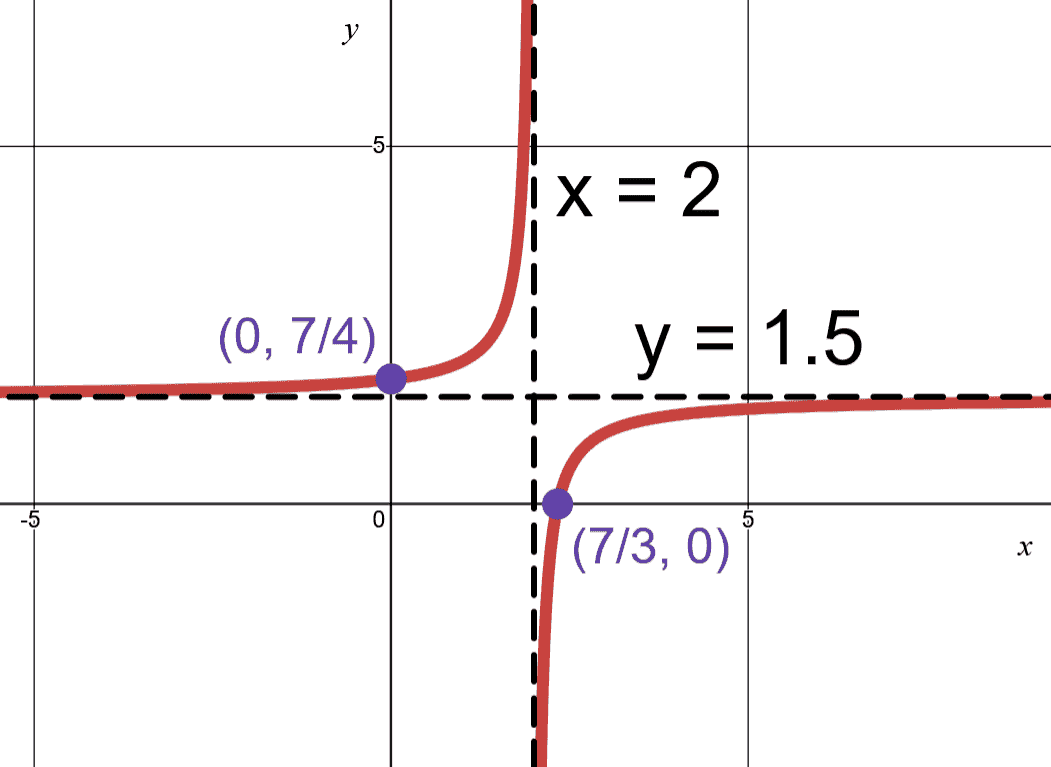Linear over linear rational functions
They look nothing like linear equations, but surprisingly is solved in the same way.
Contents
Graphing
It’s easier to remember if you think about how to generally find this value, rather than memorize these 4 equations with their signs.
The vertical asymptote is when denominator would be :
Horizontal asymptote at large , which is when and become negligible.
The -intercept is when
The -intercept is when , ie when numerator is .
See this Desmos playground to visualize the effects of these four parameters on the shape of the graph.
The two parts of a linear over linear rational functions (as long as the linear functions are not multiples of each other), always occupy opposite corners of the asymptotes, and are rotationally symmetric about the intersection point of the asymptotes.
Example: Graph
showing the asymptotes and intercepts with the axes.
The vertical asymptote is where denominator is zero. .
The -intercept is where numerator is zero. .
The horizontal asymptote is ratio of leading coefficients. .
The -intercept is .
By using the points , we can identify which quadrants the graph lies in.
Putting it all together we obtain this graph.

Alternative form
It can be verified that , this section is about how to obtain that and how it is helpful.
In working backwards, by first finding the common denominator, we see that
In particular, using functions transformations to analyze indicates that the horizontal asymptote is moved to and vertical asymptote is moved to . The minus sign indicates a reflection across either - or -axis.
In general,
If , then the rational function occupies the top-right and bottom-left corners of the asymptotes; if , then it occupies the top-left and bottom-right corners.
See example using this manipulation to integrate linear over linear rational functions.
This form also slightly simplifies finding inverse functions, and solving
Connection: derivative using quotient rule.
Note that has negative derivative for all , while , ie with a reflection, has positive derivative for all .
From quotient rule
The denominator is always positive, so means top-right and bottom-left corners of the asymptotes; means top-left and bottom-right corners of the asymptotes. This matches the criterion derived from writing the function above.
Self-inverse
is its own inverse function. Here the horizontal asymptote is and the vertical asymptote is , which allows the asymptotes and the rest of the functions to be symmetric across the diagonal line. Other examples of self-inverse functions are discussed at HL.